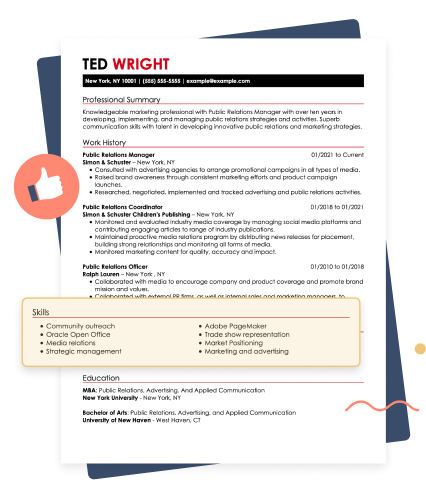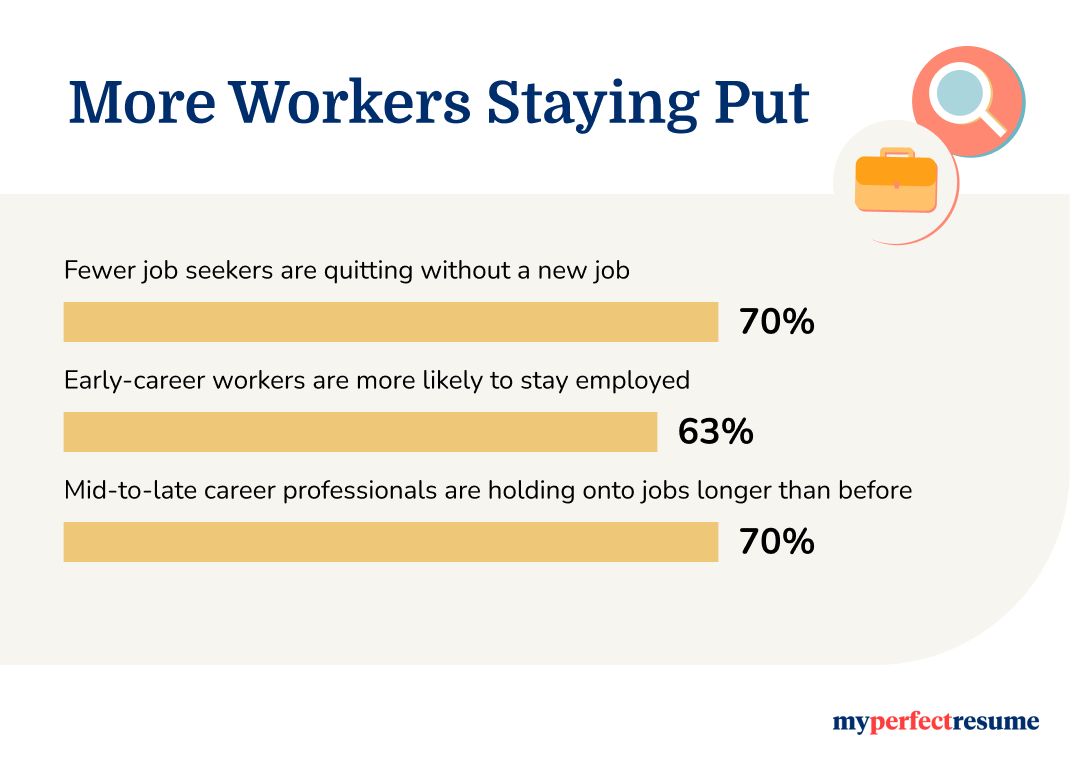70% Fewer Workers Quitting to Job Hunt, But Career Gaps Due to Health and Family Are Rising

Our customers have been hired at: *Foot Note
The days of quitting a job before securing a new one may be fading. New data from MyPerfectResume shows that workers in 2025 are significantly less likely to leave their jobs before starting their job search.
However, while job security has become a top priority, career gaps caused by health issues and family responsibilities are on the rise.
An analysis of 33,000 cover letters created on MyPerfectResume’s platform between January-March 2024 and January-March 2025 highlights this shift. Workers are opting for stability over risk, choosing to remain employed while job searching.
At the same time, more professionals are stepping away from the workforce due to medical and caregiving duties, raising questions about workplace flexibility and support systems.
Key findings:
- 70% decrease in job seekers quitting before searching for a new job
- 14% overall increase in medical-related career gaps
- 12% rise in childcare-related employment gaps
- 36% more mobile job seekers reported work gaps in 2025 compared to 2024
- 4% decrease in employment gaps among desktop users
Job Security Over Job Hopping
Quitting a job before securing a new role is becoming less common. Compared to last year:
- Job seekers are 70% less likely to resign before finding a new job.
- Early-career workers are 63% less likely to leave a job for job searching.
- Mid-to-late career workers are 70% less likely to leave for job searching.
Here is a visualization of the above data:
What this means: Workers are prioritizing job stability, likely due to economic uncertainty and shifting job market dynamics. Instead of taking the risk of quitting without a safety net, employees are conducting discreet job searches while remaining employed. Employers may see fewer voluntary resignations but should expect more stealth job seekers within their workforce.
The Rise of Medical and Caregiving Career Gaps
While fewer people are quitting to job hunt, more professionals are pausing their careers for personal reasons:
- Medical-related career gaps increased by 14% overall.
- Early-career workers saw a 20% rise, while mid-to-late career workers experienced a 22% increase.
- Childcare-related career gaps increased by 12%.
- Early-career workers saw an 18% rise, while mid-to-late career workers experienced a 9% increase.
What this means: More workers are stepping away from the workforce to address personal health or caregiving responsibilities. This trend underscores the need for companies to enhance support systems, such as flexible work arrangements, paid leave policies, and better accommodations for employees facing medical or family-related challenges.
Mobile vs. Desktop Job Seekers: A Growing Divide
A shift is emerging between mobile and desktop job seekers. Mobile users—often younger professionals and gig workers—are more likely to report employment gaps:
- Early-career mobile users saw a 43% increase in work history gaps.
- Mid-to-late career mobile users experienced a 17% rise.
- Desktop users reported 4% fewer employment gaps, indicating greater job stability.
What this means: Mobile job seekers — who tend to include younger workers, gig economy participants, and flexible job seekers — are experiencing more frequent career interruptions. This divide suggests that traditional employment paths may offer more stability, while gig and remote roles might present greater job volatility.
What Companies Can Do to Adapt
With workers prioritizing job security and personal well-being, businesses should consider:
- Providing flexible work arrangements and paid leave to support employees with medical and family responsibilities.
- Creating transparent career pathways to retain employees who may otherwise seek new roles.
- Addressing job security concerns to prevent employees from conducting stealth job searches.
The workforce is evolving, and job seekers are adjusting their behaviors in response to economic and personal realities. Employers that adapt to these trends — by offering stability, flexibility, and support — will be better positioned to attract and retain top talent in 2025 and beyond. Explore recent hiring outlook survey data for key insights into hiring and resume trends.
For more workforce insights, contact Nathan Barber at nathan.barber@bold.com.
Methodology
The findings in this report are based on an analysis of 33,000 cover letters created on MyPerfectResume’s platform between January-March 2024 and January-March 2025. Cover letters were examined for references to employment gaps, reasons for leaving jobs, and job search behaviors. The data was aggregated and analyzed to identify trends in voluntary resignations, job security concerns, and career gaps related to medical and caregiving responsibilities.
About MyPerfectResume
MyPerfectResume Resume Builder with professional templates is designed to help job seekers elevate their careers. The easy-to-use platform was created to eliminate the hassle of resume writing, offering professionally written examples, free expert tips, step-by-step guidance to make a resume, and valuable interview advice to create an outstanding job application effortlessly. Since 2012, MyPerfectResume's Resume Builder has helped more than 11 million job seekers create their perfect resumes online. Its comprehensive employment surveys have been featured in Forbes, Yahoo! Finance, CNBC, Newsweek, USA Today, BBC, Workable, and more. Stay connected with MyPerfectResume’s latest Facebook, LinkedIn, Instagram, X, and Pinterest updates.
Our customers have been hired at:*Foot Note




